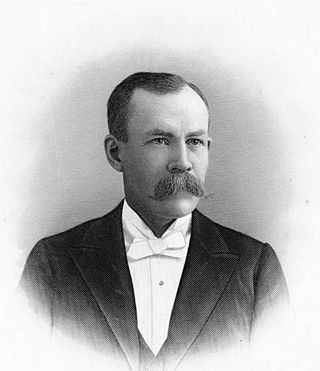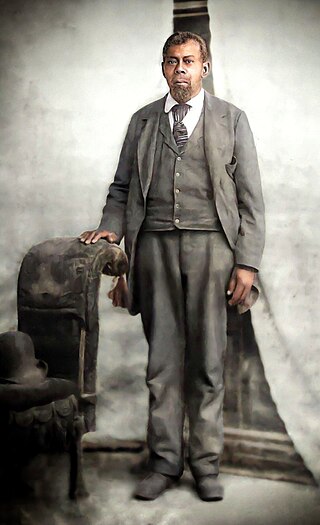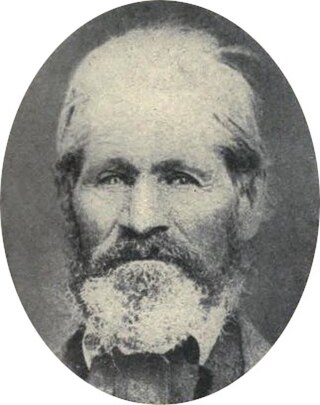
Nauvoo is a small city in Hancock County, Illinois, United States, on the Mississippi River near Fort Madison, Iowa. The population of Nauvoo was 950 at the 2020 census. Nauvoo attracts visitors for its historic importance and its religious significance to members of several groups: The Church of Jesus Christ of Latter-day Saints; the Community of Christ, formerly the Reorganized Church of Jesus Christ of Latter-day Saints (RLDS); other groups stemming from the Latter Day Saint movement; and the Icarians. The city and its immediate surrounding area are listed on the National Register of Historic Places as the Nauvoo Historic District.

Bountiful is a city in Davis County, Utah. As of the 2020 census, the city population was 45,762, an eight percent increase over the 2010 figure of 42,552. The city grew rapidly during the suburb growth of the late 1940s, 1950s, and 1960s and was Davis County's largest city until 1985, when it was surpassed by Layton. Bountiful is Utah's 18th-largest city.

Holladay is a city in central Salt Lake County, Utah, United States. It is part of the Salt Lake City, Utah Metropolitan Statistical Area and abuts the Wasatch National Forest. The population was 31,965 at the 2020 census, a significant increase from 14,561 in 2000 when the first area incorporated from Salt Lake County. The city was incorporated on November 29, 1999, as Holladay-Cottonwood, and the name was shortened to Holladay on December 14 of that year. It was reported in the 1990 census as the Holladay-Cottonwood CDP.
Early Mormonism had a range of doctrines related to race with regards to Black people of African descent. References to Black people, their social condition during the 19th and 20th centuries, and their spiritual place in Western Christianity as well as in Mormon scripture were complicated.
During the history of the Latter Day Saint movement, the relationship between Black people and Mormonism has included enslavement, exclusion and inclusion, and official and unofficial discrimination. Black people have been involved with the Latter Day Saint movement since its inception in the 1830s. Their experiences have varied widely, depending on the denomination within Mormonism and the time of their involvement. From the mid-1800s to 1978, Mormonism's largest denomination – the Church of Jesus Christ of Latter-day Saints – barred Black women and men from participating in the ordinances of its temples necessary for the highest level of salvation, prevented most men of Black African descent from being ordained into the church's lay, all-male priesthood, supported racial segregation in its communities and schools, taught that righteous Black people would be made white after death, and opposed interracial marriage. The temple and priesthood racial restrictions were lifted by church leaders in 1978. In 2013, the church disavowed its previous teachings on race for the first time.

The Mormon Trail is the 1,300-mile (2,100 km) long route from Illinois to Utah on which Mormon pioneers traveled from 1846–47. Today, the Mormon Trail is a part of the United States National Trails System, known as the Mormon Pioneer National Historic Trail.

Hosea Stout was an early leader in the Latter Day Saint movement, a Mormon pioneer, soldier, chief of police, lawyer, missionary, and politician in Utah Territory.

Joseph Lafayette Rawlins was a delegate to the U.S. Congress from Utah Territory and a Senator from Utah after statehood was achieved.

Biddy Mason was an African-American nurse and a Californian real estate entrepreneur and philanthropist. She was one of the founders of the First African Methodist Episcopal Church in Los Angeles, California. Enslaved upon birth, she developed a variety of skills and developed knowledge of medicine, child care, and livestock care. A California court granted freedom to her and her three daughters in 1856.
Edward Henry Anderson was a missionary and local leader of the Church of Jesus Christ of Latter-day Saints as well as a writer and editor.
Joseph Knight Sr. was a close associate of Joseph Smith, founder of the Latter Day Saint movement. Knight provided significant material support to Smith's translation and publication of the Book of Mormon.
The Nauvoo Brass Band was an official musical organization of the Church of Jesus Christ of Latter Day Saints when the church's headquarters were located in Nauvoo, Illinois. It was later revived by the Church of Jesus Christ of Latter-day Saints in the Utah Territory.

The Church of Jesus Christ of Latter-day Saints in Mississippi refers to the Church of Jesus Christ of Latter-day Saints and its members in Mississippi. The first small branch was established in 1842. It has since grown to 22,189 members in 49 congregations.

The Church of Jesus Christ of Latter-day Saints in California refers to the Church of Jesus Christ of Latter-day Saints and its members in California. California has the 2nd most members of the LDS Church in the United States, behind Utah. The LDS Church is the 2nd largest denomination in California, behind the Roman Catholic Church.

Since Mormonism's foundation, Black people have been members, however the church placed restrictions on proselytization efforts among Black people. Before 1978, Black membership was small. It has since grown, and in 1997, there were approximately 500,000 Black members of the church, mostly in Africa, Brazil and the Caribbean. Black membership has continued to grow substantially, especially in West Africa, where two temples have been built. By 2018, an estimated 6% of members were Black worldwide. In the United States, approximately 1% of members are Black.

Green Flake was an early African-American member of the Church of Jesus Christ of Latter Day Saints, and was one of the three enslaved African-American Latter-day Saint pioneers who entered the Salt Lake Valley on July 22, 1847. He was born into bondage on a plantation in Anson County, North Carolina. His enslaver, James Flake, took him to Mississippi in the early 1840s. There, James, his wife, and Green joined the Church of Jesus Christ of Latter Day Saints in 1844. The Flakes moved to Nauvoo, Illinois, in 1845. Green Flake received his freedom sometime in the early 1850s and married Martha Morris. Green and Martha had two children together.

The Latter Day Saint movement has had varying and conflicting teachings on slavery. Early converts were initially from the Northern United States and opposed slavery, believing that their opposition was supported by Mormon scripture. After the church base moved to the slave state of Missouri and gained Southern converts, church leaders began to enslave people. New scriptures instructing Latter-Day Saints not to intervene in the lives of the enslaved people were revealed. A few enslavers joined the church, and when they moved to Nauvoo, Illinois, they illegally took their enslaved people with them, even though Illinois was a free state.

Charles Shumway (1806–1898) was an early member of the Church of Jesus Christ of Latter-day Saints who served as a member of the Council of Fifty and was part of the Utah Legislature for one term in 1851.

Hark Lay Wales, born in Monroe County Mississippi, was one of the few African Americans to cross the Mormon Trail as a pioneer with members of The Church of Jesus Christ of Latter-day Saints. Hark Lay Wales was a hardworking man who helped the Saints cross the Mormon Trail and arrive in Utah. He acquired his freedom and lived a peaceful life in California until he later returned to Utah. Not much is known about the life of Hark Lay Wales but he was a historic figure for the history of African Americans in the Church of Jesus Christ of Latter-Day Saints.














